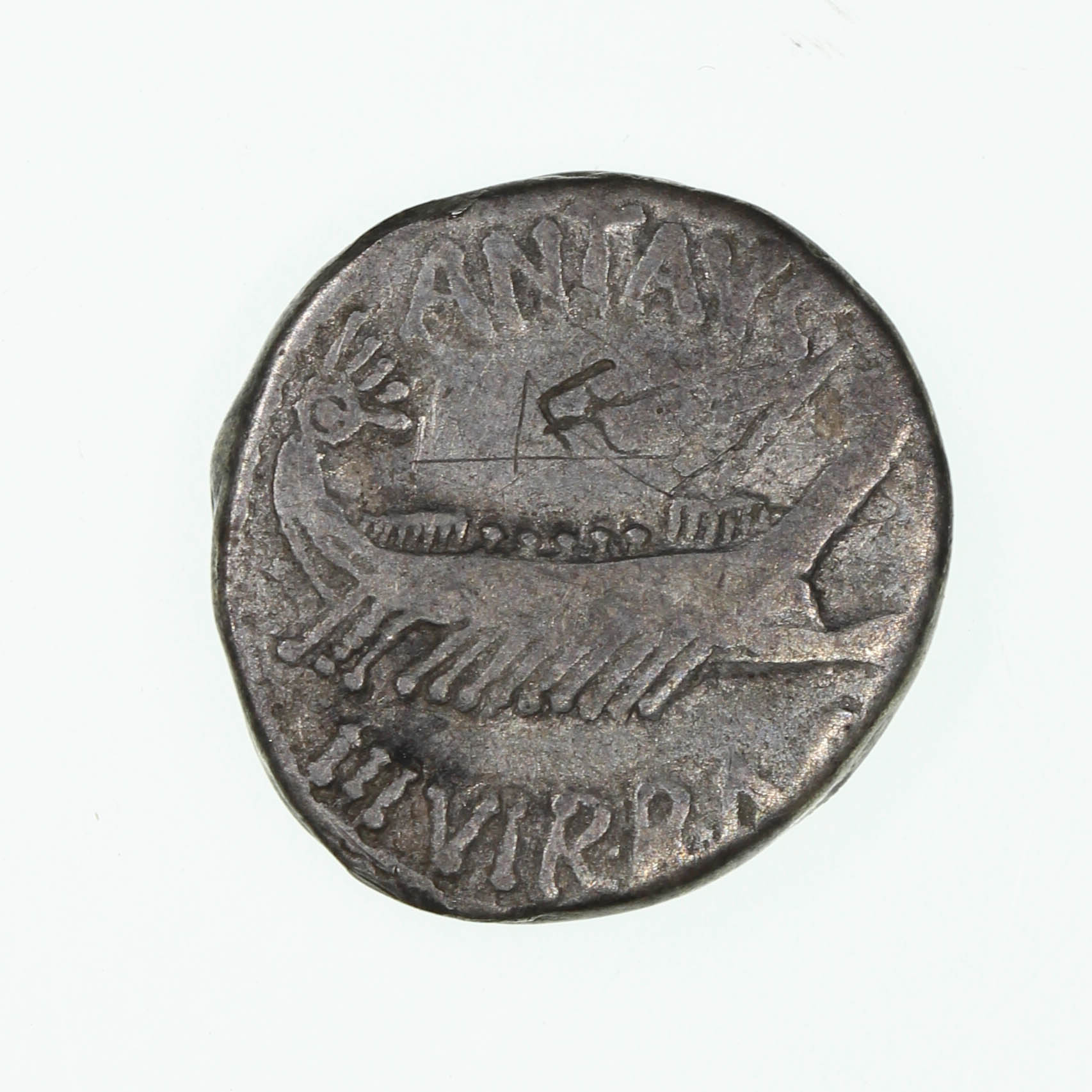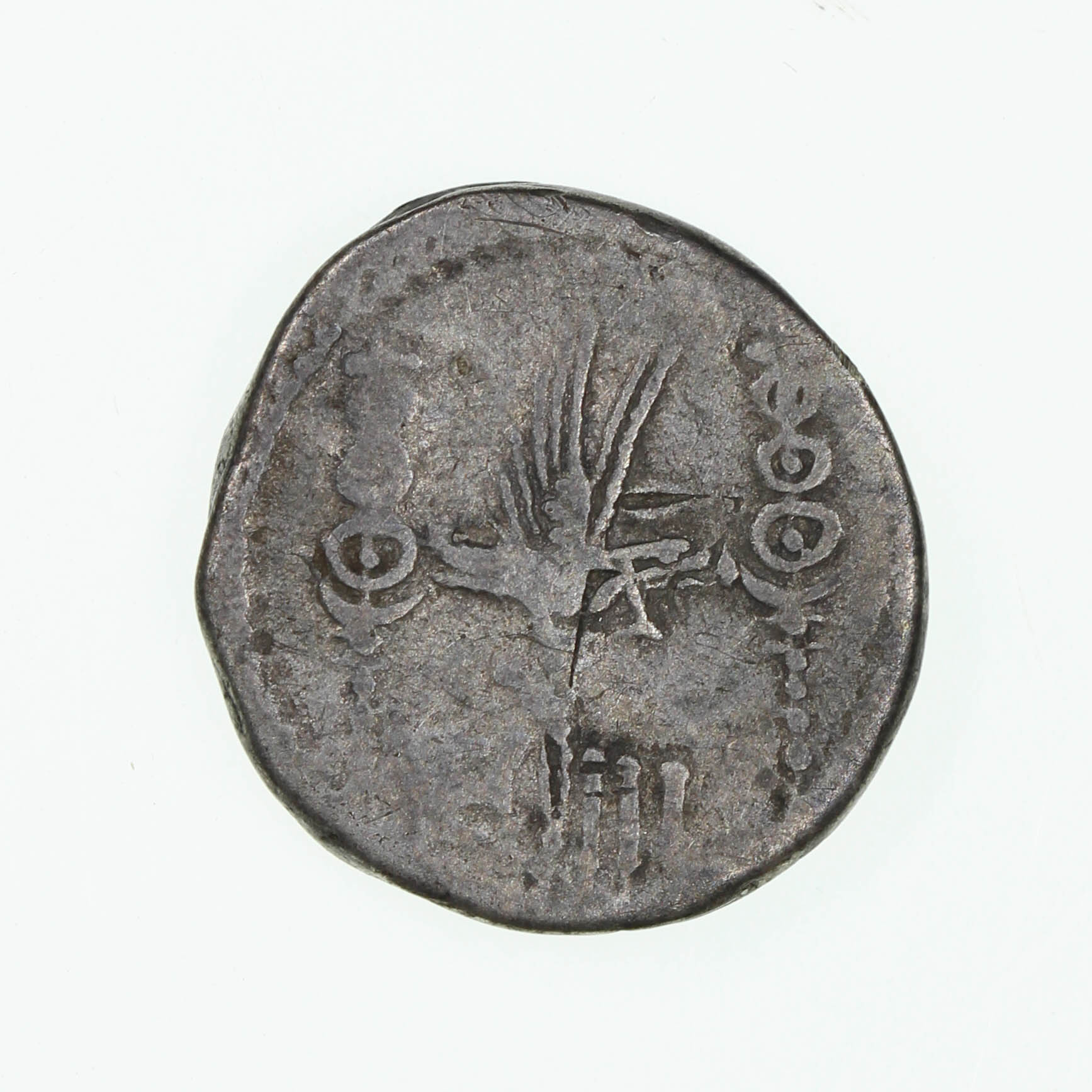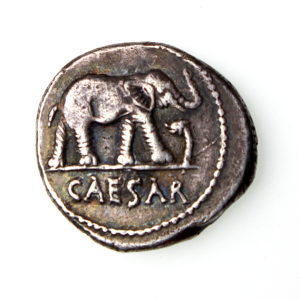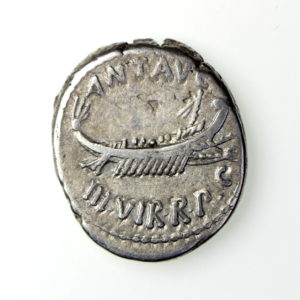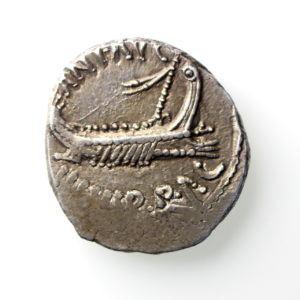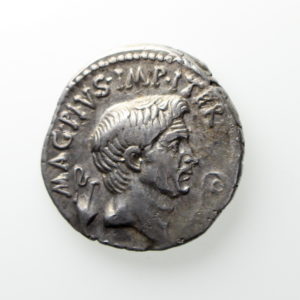Roman Imperatorial Mark Anthony 32-31 BC Silver Denarius LEG III
£250.00
Roman Imperatorial Mark Anthony 32-31 BC Silver Denarius
Galley / Eagle LEG III
RCV1479, 15mm, 3.23g
This coin is from the Helmingham Hoard.
The Helmingham Hoard of British Iron Age and Roman coins.
In September of 2019, George Ridgway made a discovery of great historical and numismatic importance.
An avid treasure hunter from a tender age – having received his first metal detector at just 12 years old as a gift from his grandmother – George was drawn to Helmingham Hall, Suffolk, by its historical significance. Happily, the Hall’s residents shared George’s passion for the past, and he was granted private permission to detect the grounds. At the request of the landowner, the exact find spot is to remain undisclosed. However, it can be said that the field in question lies close to a Roman road and that it has produced a general assemblage of Roman material. We can also relay the presence, close by the where the hoard was found, of a ‘small oddly shaped crop-circle’; this feature later transpired to be a natural pond, filled in during the course of 19th century agricultural work.
The day of discovery started with a scattering of Roman brooches, several of which have been dated to the first century, making them roughly contemporary with the hoard presented here. Some 30 yards down the field came the first coin; a Denarius of Julius Caesar which poked its head up and was revealed. Over the next three hours, 206 coins were found, spread across an area of approximately one and a half metres. George, well aware of the significance of this find, was keen that it be properly recorded and assessed for archaeological significance. The local archaeologist was notified and George’s father offered to camp at the site and keep watch; he stayed for two nights standing guard to protect the hoard. Shortly after, an extensive three- month-long archaeological dig was undertaken; this yielded a further 205 coins, with 314 more being found during controlled metal detecting of the site within a 60 yard radius of the initial find. George diligently returned to the site in both 2020 and 2021, finding a further 9 and 14 coins respectively. All together, one gold Aureus of Claudius, 724 Roman silver Denarii, 19 gold Staters and 4 quarter Staters of Cunobelin were found, making this the largest mixed hoard of British Iron Age and Roman coins found to date in Britain.
Shattered remains of the base of a pot were also found near the corner of the field, in very close proximity to one of the Denarii.
The Helmingham Hoard was recorded with the Portable Antiquities Scheme and allocated special finds numbers. The 2019 finds were recorded with the Portable Antiques Scheme (SF-8C645E, 2020 SF-521A7C and 2021 SF-AEA396), and the hoard passed through the treasure process (2019T974, 2020T915 and 2021T655 respectively). Sixty three coins were retained by various museums, with the rest being returned to the finder and landowners in early 2024. The hoard is now being offered for sale in the hopes that its dispersal might inspire other treasure hunters and numismatists to continue in their efforts and to enable further study into this important part of our history. When asked what he will do with the money raised from the auction, after splitting it with the landowners, George said he will buy his dad a pint!
The final coin in the hoard was struck in AD 46–47, providing us with a terminus post quem during the reign of the emperor Claudius, just a few years after the conquest of Britain. The Claudian invasion of Britain began in AD 43, with the forces initially led by Aulus Plautius. By AD 47 Plautius had conquered and negotiated treaties with many of the southern tribes, only to be replaced in his role by Publius Ostorius Scapula. Early in AD 47 Scapula introduced into law the compulsory disarmament of the British tribes, with exception granted for hunting equipment. Unsurprisingly, this was not well received by the subjugated locals; a guerrilla campaign ensued and the western tribes led by Caratacus, the son of Cunobelin, marched eastwards to face the Romans. Scapula, in response, prepared his men for battle. Today we know this series of sevens as the Iceni Revolt. Almost everyone, historian or not, has heard of Boudicca and the Iceni Rebellion of AD 60-61. In contrast, the Iceni Revolt of 47 remains far more obscure, both within academic circles and public consciousness; the discovery of the Helmingham Hoard offers a tangible insight into this fascinating period of our nation’s history.
Helmingham Hall lies just short of twenty seven miles north of Camulodunum, an important early Roman settlement. It is here that veterans of the XX Valeria Victrix retired to prior to AD 49. According to Tacitus in his Annals 12.31, Publius Ostorius brought down the Iceni Revolt with “allied troops, without the strength of the legions”; it seems quite plausible that legionary veterans would be included in this number. Sixty five miles to the north of Helmingham Hall is Stone Camp Hillfort, a sight which has been identified as the place where the Romans, finally and ultimately, put down the Revolt.
Helmingham, then, fell right in the middle of these dramatic events. It is tempting to assume that the hoard’s original owner was an active participant in this conflict. We can speculate from the hoard’s considerable value, with the 724 Denarii equating to just over three years salary for a legionary soldier, that its owner might have been a high-ranking Legionary, perhaps a Tesserarius or Option. We can go further still, sketching in loosest terms his career in Britain; how he came over to Britain in AD 43 with the XX Valeria Victrix, then travelled up north with Plautius’ forces, settled in Camulodunum for a short while, before heeding Publius Ostorius call to arms to put the down the Iceni Revolt; how he travelled north to Helmingham where the hoard was buried by the pond, before going onwards up to Stone Camp Hillfort where he fell in battle. However, none of this need be true. It was quite common for people who had access neither to banks nor vaults to conceal their wealth in the ground, even in times of peace. Whatever the case, a hoard of this size would not easily be forgotten and its retrieval must have been prevented by some great personal misfortune. The truth is that we will never know the name or position of the Helmingham Hoard’s original; what we can say is that they were a participant in one of the most dramatic and impactful chapters in the history of this island.
Out of stock

